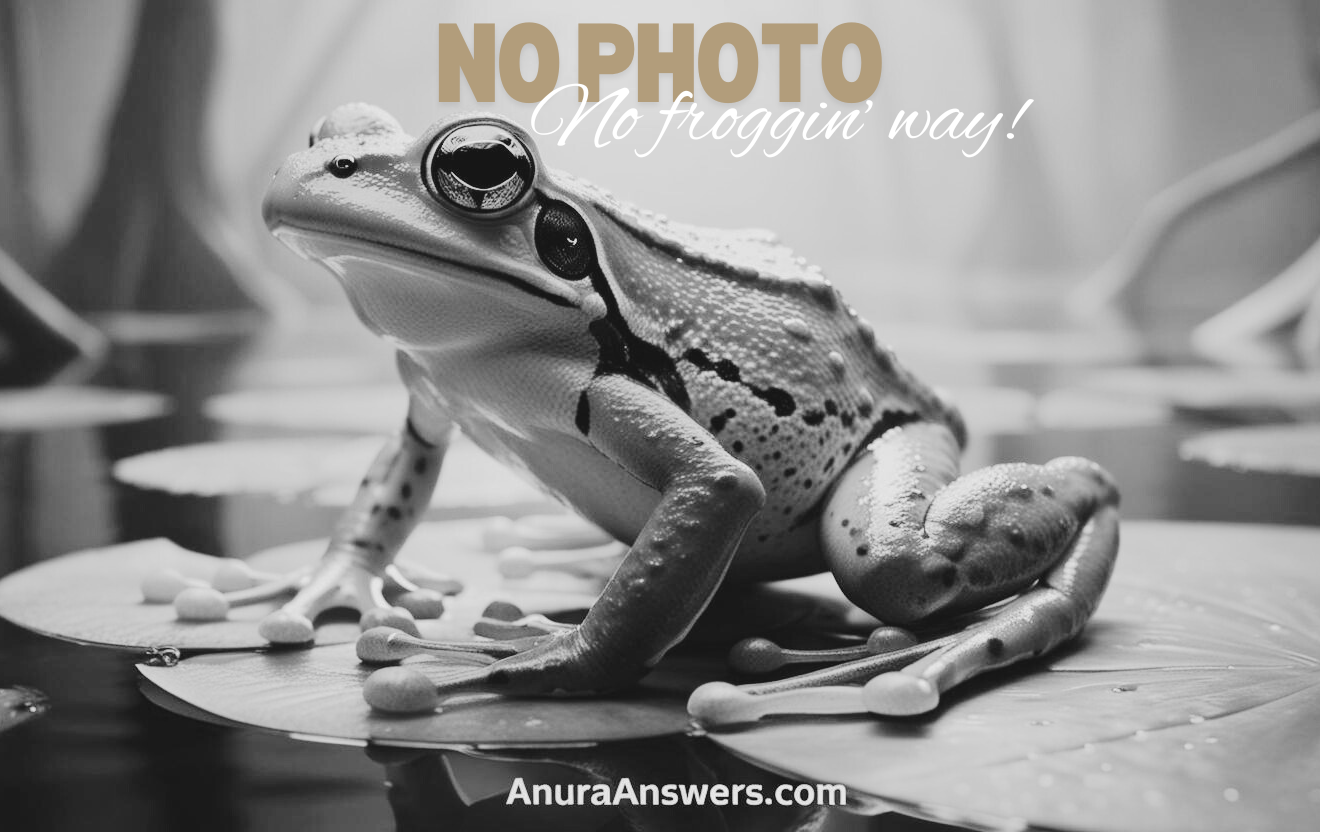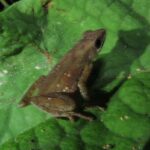- Ischnocnema concolor: Secrets of the Hidden Forest-Dweller
- Taxonomy and Classification
- Natural Habitat: Life Beneath the Leaves
- Physical Characteristics: Expert Camouflage and Subtle Elegance
- Behavior and Life Cycle: Unusual Members of the Frog World
- Ecological Role: The Quiet Guardians of Ecological Balance
- Threats and Conservation Status: A Call for Action
- Cultural and Scientific Significance
- Conclusion: A Symphony Worth Protecting
Ischnocnema concolor: Secrets of the Hidden Forest-Dweller#
Beneath the emerald canopy of Brazil’s lush Atlantic Forest, hidden amongst mossy leaf litter, tangled roots, and the rich humus of aging woodland soils, lives an unassuming, enigmatic amphibian that often escapes notice. Meet Ischnocnema concolor, a captivating species of frog whose understated presence belies its profound ecological importance.
At first glance, one might overlook this tiny being. It’s neither flashy in color nor spectacular in shape. But when you pause, embracing the soothing sounds and tranquillity of its evergreen home, you may discern a gentle symphony of chirps in the darkness— a chorus revealing a complex network of life concealed beneath your feet. Ischnocnema concolor, the master of camouflage and subtlety, runs unnoticed yet carries within its quiet existence secrets that could illuminate our understanding of ecological balance and resilience. Let’s explore the fascinating story of this frog species, its life within the forest, and why its conservation matters deeply to the habitats it calls home.
Taxonomy and Classification#
Ischnocnema concolor belongs to the large and diverse family Brachycephalidae, a distinct lineage of frogs remarkably adapted to life in dense tropical forests of South America. Within the realm of amphibian classification, it falls under the genus Ischnocnema, renowned for their direct-developing offspring—frogs that bypass the typical aquatic tadpole stage altogether. The genus is distinguished by its intriguing reproductive adaptations and an impressive variety of camouflage techniques perfected over millions of years.
This species was first described scientifically in the late 19th century and since then has been subject to taxonomical scrutiny and interest. Through molecular genetics and advanced classification techniques, Ischnocnema concolor is now securely recognized among its closest relatives: species like Ischnocnema guentheri and Ischnocnema henselii, similar ground-dwelling inhabitants that have evolved subtle yet significant differences in their vocalizations and habitat preferences.
Natural Habitat: Life Beneath the Leaves#
Step into the shaded tranquility of the Brazilian Atlantic Forest, and you have entered the realm of Ischnocnema concolor. This diminutive frog inhabits the moist leaf litter and shaded understory of mature forests, from Espírito Santo and Rio de Janeiro down into São Paulo and Minas Gerais. It thrives in protected, humid ecosystems where dense canopies filter sunlight, creating a constant, nurturing microclimate beneath.
The forest floor, carpeted with decaying leaves, damp mosses, and fallen branches, forms the perfect habitat. Here, the soft substrate retains essential moisture and provides abundant shelter from predators. Occasionally, individuals may even venture up lower vegetation, skillfully grasping thin stems and leaves with their delicate limbs, always mindful of their vulnerability in a predator-rich environment.
The ecological vibrancy of its chosen habitat supports a diverse menu of insects and invertebrates—critical dietary components. Remarkably, this habitat’s integrity also benefits from its tenants. Frogs like I. concolor contribute to controlling insect populations, recycling nutrients, and serving as sensitive indicators of environmental health, making their welfare intricately tied to that of the entire ecosystem they inhabit.
Physical Characteristics: Expert Camouflage and Subtle Elegance#
At first glance, Ischnocnema concolor appears deceptively plain—a small frog measuring roughly 20 to 30 millimeters in length at adulthood. Yet its simplicity disguises remarkable evolutionary adaptations. Its name “concolor,” derived from Latin, meaning “uniform color,” truly defines its external appearance—a relatively consistent olive-brown, gray, or russet hue covers its body, providing an incredibly effective camouflage against the forest floor’s organic tapestry.
Their bodies are compact and streamlined, bearing smooth to slightly-textured skin with subtle patterns that break up their outlines. The eyes—large relative to the head—are alert, demonstrative of the frog’s nocturnal activity patterns, actively searching for invertebrate prey amidst dim conditions. Strong, agile limbs, proportionately adapted for navigating dense vegetation and leaf litter, allow stealthy movements and quick, powerful leaps when evading danger.
This remarkably cryptic form of coloration and morphology is no mere accident. Evolution has fine-tuned the physical features of Ischnocnema concolor over millions of years, finely sculpting them to become virtually invisible inhabitants of their verdant domain—an essential aspect of their daily survival and continued evolutionary success.
Behavior and Life Cycle: Unusual Members of the Frog World#
A Unique Development: Direct Development#
Among frogs, the standard lifecycle usually involves a conspicuous shift—from egg to aquatic tadpole to terrestrial adult. Yet, Ischnocnema concolor defies this convention. They showcase the uncommon phenomenon known as “direct development.” In direct development, eggs deposited by females are laid in damp, shaded terrestrial environments, often beneath fallen leaves or within rotting logs. These eggs bypass the aquatic tadpole stage entirely, hatching instead as fully formed miniature frogs—not only an intriguing life history trait but also a profound adaptation to their terrestrial, moisture-dependent habitat.
Nocturnal Hunters: Masters of Stealth#
Active primarily at night, this species embodies stealth and subtlety in its approach to prey. Using its sensitive and large eyes, keen hearing, and adept reflexes, I. concolor captures various creatures—ants, small beetles, mites, spiders, and other soil-dwelling invertebrates constitute the bulk of their diet. With breathtaking agility, these frogs strike swiftly and accurately, an asset in an environment where openings to feed safely are fleeting.
Quiet Communicators: Soft Calls and Hidden Messages#
Unlike many frog species known for loud and boisterous choruses, male I. concolor communicate through subdued, soft chirps and whistles, most pronounced during mating seasons. These gentle, unique calls play a fundamental role in courtship and territorial behavior, creating a subtle nocturnal orchestra often hidden from the human observer’s ear.
Ecological Role: The Quiet Guardians of Ecological Balance#
Amidst its apparent modesty, Ischnocnema concolor occupies a significant ecological niche. By preying upon abundant invertebrate populations, this species helps maintain insect balance, indirectly supporting plant health and benefiting the broader ecosystem dynamics. Simultaneously, they are preyed upon by larger amphibians, reptiles, birds, and various small mammals, serving as a crucial link in the complex, interwoven food web of their forested home.
As bioindicators, their health accurately mirrors the overall health of their habitats. As forests decline and diversity wanes, so too will the populations of sensitive amphibians like I. concolor, serving as early and valuable indicators of environmental distress.
Threats and Conservation Status: A Call for Action#
The intricate habitats vital to I. concolor are declining alarmingly, placing these frogs at significant risk. Extensive deforestation, urban expansion, agricultural encroachment, and climate change-induced drought are the principal threats facing their populations. Amphibian diseases, including chytridiomycosis, also remain a latent danger.
Although the International Union for Conservation of Nature (IUCN) currently classifies Ischnocnema concolor as “Least Concern,” vigilance remains essential. The species’ sensitivity to habitat loss and fragmentation underscores the urgency for protective measures and vigilant monitoring, even for currently stable populations.
Conservation initiatives currently advocate for preserving their fragile habitats, educating local communities, and investing in ecological research. Protecting areas of forest, promoting sustainable land-use policies, and development of local conservation programs help build long-term resilience for these unique frogs.
Cultural and Scientific Significance#
In traditional folklore and popular culture, though seldom directly mentioned, frogs like I. concolor symbolize resilience and harmony within ecosystems. Scientifically, studying their lifestyles and adaptability, particularly their direct developmental biology, might reveal insights into evolutionary adaptations and potential biomedical applications relevant to human health advancements.
Conclusion: A Symphony Worth Protecting#
Ischnocnema concolor, small and seemingly unpretentious, deeply embodies nature’s complexity, interconnectedness, and elegance. Through their quiet existence, they remind us of the hidden wonders within ecosystems and our collective responsibility to preserve their fragile world.
Each of us holds a role in protecting Ischnocnema concolor’s habitat. By learning more, supporting local conservationists, or simply advocating for Earth’s forests, we ensure that the gentle symphonies of these remarkable creatures play on for generations to come.







